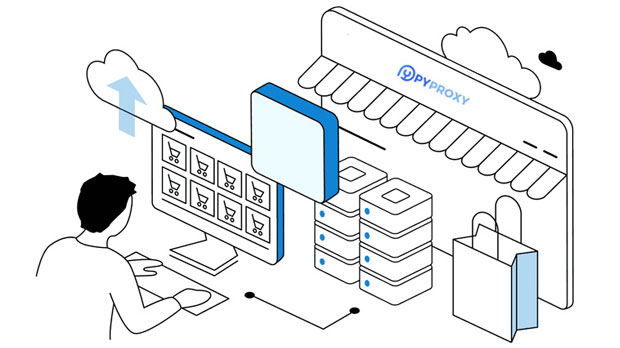When it comes to the use of Proxy Browsers, one common question that arises is whether they support paid proxies. The concept of proxies is integral to many online activities, such as browsing anonymously, accessing geo-blocked content, or performing data scraping. Proxies can either be free or paid, and many users seek to understand the difference in terms of performance, security, and functionality. This article delves into the question of whether Proxy Browsers support paid proxies, exploring the benefits, limitations, and key factors that influence their compatibility with paid proxy services. We will also discuss how to make an informed choice for your specific needs, ensuring that you get the most out of your proxy experience. Understanding Proxy Browsers and Paid ProxiesBefore diving into the compatibility of Proxy Browsers with paid proxies, it's important to understand the roles of both. A Proxy Browser is a browser that routes traffic through a proxy server to mask the user's IP address. This technology is widely used to enhance privacy, bypass restrictions, or scrape data from websites. A paid proxy, on the other hand, refers to a service where users pay for access to a dedicated or semi-dedicated proxy server, which tends to offer better speed, anonymity, and security compared to free proxies.Paid proxies typically come with several advantages such as more reliable performance, faster speeds, and enhanced security features like IP rotation and encryption. These proxies also allow users to bypass geographical restrictions and avoid issues like blacklisting, which can be a common problem with free proxies.Compatibility of Proxy Browsers with Paid ProxiesThe short answer to the question of whether Proxy Browsers support paid proxies is yes, but the level of support depends on the specific browser and proxy service being used. Generally, most Proxy Browsers can support paid proxies as long as the proxy is configured properly. However, there are some critical factors that determine how well this integration works.1. Proxy Browser Configuration and SetupOne of the main factors that influence whether a Proxy Browser will support paid proxies is how the proxy is configured. For users of Proxy Browsers, configuring a paid proxy often involves entering the proxy server details into the browser’s settings. This may include the proxy ip address, port number, username, and password (for authenticated proxies). Some Proxy Browsers have built-in features that automatically detect and configure proxies, while others may require manual input. For paid proxies, some providers offer dedicated setup guides for Proxy Browsers, which can make the process much easier. However, users should be mindful that incorrect configuration could lead to issues like connection failures, slow speeds, or even security vulnerabilities.2. Proxy Type and CompatibilityNot all paid proxies are the same, and different types of proxies may offer varying levels of compatibility with Proxy Browsers. There are several types of paid proxies, such as residential proxies, data center proxies, and rotating proxies. Each of these types has its own set of characteristics that affect how well they work with Proxy Browsers.- Residential proxies are IP addresses provided by real ISPs, making them more likely to be undetectable by websites. These proxies are highly effective for bypassing restrictions but are usually slower and more expensive.- Data center proxies are not tied to ISPs and are often faster and cheaper, but they are easier to detect by websites and may face blocking more often.- Rotating proxies change the IP address periodically, which can be useful for web scraping and other tasks that require multiple IPs. These are especially useful for avoiding detection but may require specific configuration in Proxy Browsers.Depending on the Proxy Browser being used, some of these types may be easier to configure and more stable than others.3. Proxy Browser Features and LimitationsWhile most Proxy Browsers are capable of supporting paid proxies, the browser itself can play a significant role in determining the success and ease of integration. Some browsers come with built-in support for paid proxies, which means users can easily input proxy details directly into the browser's settings. Others may require third-party tools or extensions to work effectively with paid proxies.In some cases, the features of a Proxy Browser may limit its ability to work seamlessly with certain paid proxies. For example, some Proxy Browsers are optimized for use with specific types of proxies (such as residential proxies or rotating proxies) and may struggle with others. Furthermore, factors like browser security, speed, and the presence of advanced features (like anti-fingerprinting or proxy rotation support) can affect the user experience when working with paid proxies.4. Benefits of Using Paid Proxies with Proxy BrowsersThere are several advantages to using paid proxies in conjunction with Proxy Browsers, which can enhance the overall browsing experience. - Improved Security and Privacy: Paid proxies often offer better encryption and security features than free proxies, which is crucial for maintaining privacy online. Proxy Browsers that support paid proxies allow users to browse anonymously and avoid potential security threats associated with free proxies. - Bypass Geo-restrictions: Many users rely on paid proxies to access content that is restricted by geography. A Proxy Browser supporting paid proxies ensures that users can easily bypass region-based restrictions, unlocking access to global content.- Reduced Risk of Blocking: Free proxies are often overused, making them more susceptible to being blocked by websites. Paid proxies are typically more reliable and offer a lower chance of being detected and blocked, which is especially important for tasks like web scraping.- Faster Speeds: Paid proxies generally offer better performance than free proxies, especially when used with Proxy Browsers that optimize proxy settings. This is particularly important for users who require consistent, high-speed connections for tasks such as streaming or data collection.5. Choosing the Right Paid Proxy for Your NeedsWhen deciding whether to use paid proxies with a Proxy Browser, it’s important to choose the right type of proxy based on your specific needs. Factors to consider include:- Speed: If you need a fast connection for streaming or real-time applications, you should opt for high-speed data center proxies or premium residential proxies. - Anonymity: If privacy is a top concern, residential proxies are typically the best option because they are harder to detect.- Budget: Paid proxies come at a cost, so it’s essential to balance the features you need with your budget. While residential proxies offer the best anonymity, they tend to be the most expensive. Data center proxies, while faster and cheaper, might not provide the same level of privacy.In conclusion, Proxy Browsers can indeed support paid proxies, and in many cases, they are an excellent choice for users seeking enhanced privacy, security, and performance. The compatibility of a Proxy Browser with paid proxies depends on various factors, including the configuration process, the type of proxy being used, and the features of the browser itself. By choosing the right paid proxy and configuring it correctly, users can maximize the benefits of both the Proxy Browser and the paid proxy service, ensuring a smooth and secure online experience. Whether you're bypassing geo-restrictions, scraping data, or simply browsing anonymously, the right combination of Proxy Browser and paid proxy can provide the optimal solution.
Mar 26, 2025
![arrow]()



























































